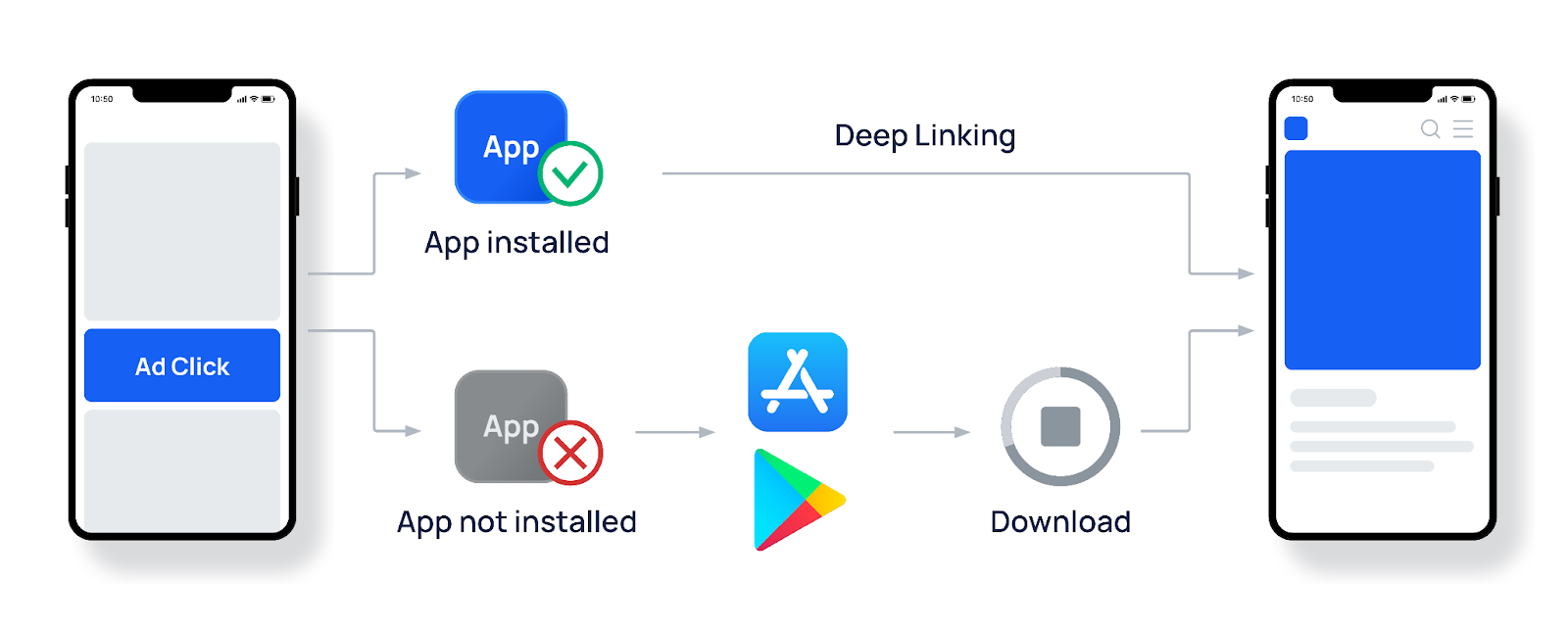Deep Hot Link Website: The Ultimate Guide To Understanding And Mastering The Art
Hey there, tech-savvy reader! If you're diving into the world of deep hot linking, you're in the right place. Deep hot linking isn't just some random tech buzzword; it's a powerful tool that can either boost your website or lead to some serious copyright issues if not handled correctly. In this guide, we’ll break down everything you need to know about deep hot linking, from what it is to how it affects your website's performance.
So, let's get one thing straight—deep hot linking isn’t for the faint of heart. It’s a technique that involves directly embedding images, videos, or other media from one website onto another. While it might seem like an easy way to enhance your site’s content, it comes with its own set of pros and cons. We’ll dive deep into those later.
Before we jump into the nitty-gritty, let’s clear the air. This guide isn’t just a quick read; it’s a comprehensive resource packed with actionable insights. By the end of it, you’ll not only understand what deep hot linking is but also how to use it responsibly and effectively.
Read also:Bolly4you Movies Bollywood The Ultimate Hub For All Your Bollywood Cravings
What is Deep Hot Linking?
Deep hot linking, also known as inline linking or embedded linking, is the process of embedding content from one website directly onto another. Instead of hosting the media yourself, you’re pulling it from someone else’s server. Sounds simple, right? Well, it is—but there’s more to it than meets the eye.
This technique allows users to display rich media on their websites without the hassle of downloading or hosting it themselves. However, it’s a double-edged sword. While it simplifies content sharing, it can also lead to bandwidth theft and copyright violations if not done ethically.
Why Should You Care About Deep Hot Linking?
Deep hot linking isn’t just a technical concept; it’s a critical aspect of digital ethics and website performance. Here’s why you should care:
- Bandwidth Theft: When you deep hot link someone else’s content, you’re essentially using their server resources. This can lead to increased costs for the original site owner.
- Copyright Issues: Not all content is free to use. Deep hot linking without permission can land you in legal hot water.
- SEO Implications: Search engines prioritize original content. Deep hot linking can harm your site’s SEO if search engines detect that your content isn’t unique.
How Does Deep Hot Linking Work?
Behind the scenes, deep hot linking is pretty straightforward. When you embed an image or video from another site, you’re essentially creating a link to that file’s URL. Here’s how it works:
- The browser requests the media file from the original server.
- The server processes the request and sends the file back to the browser.
- The file is then displayed on your website.
This process happens seamlessly for the user, but behind the scenes, it can strain the original server’s resources.
Benefits of Deep Hot Linking
Despite its drawbacks, deep hot linking does have its perks. Let’s take a look at some of the benefits:
Read also:Bolly4uurg Your Ultimate Guide To Bollywood Entertainment
1. Easy Content Integration
With deep hot linking, you can add high-quality media to your site without worrying about storage or hosting. Just grab the URL, and you’re good to go.
2. Real-Time Updates
Since the content is hosted on another server, any changes made to the original file will automatically reflect on your site. This ensures that your content stays up-to-date without any extra effort on your part.
3. Cost-Effective
Hosting large media files can be expensive. By deep hot linking, you save on server costs and focus on other aspects of your website.
Drawbacks of Deep Hot Linking
While deep hot linking sounds great in theory, it’s not without its downsides. Here are some of the potential drawbacks:
1. Bandwidth Theft
As mentioned earlier, deep hot linking uses the original site’s server resources. If too many people deep hot link the same content, it can slow down the original site and increase its bandwidth costs.
2. Legal Issues
Not all content is free to use. Deep hot linking without permission can result in copyright infringement lawsuits, which can be costly and time-consuming.
3. SEO Penalties
Search engines like Google prioritize original content. If they detect that your site relies heavily on deep hot linking, your SEO rankings could suffer.
How to Protect Your Website from Deep Hot Linking
If you’re a website owner, you might be wondering how to protect your site from deep hot linking. Here are a few strategies to consider:
1. Use Hot Link Protection
Most web hosting services offer hot link protection features. These tools prevent other sites from embedding your content without permission.
2. Watermark Your Content
Adding watermarks to your images and videos makes it harder for others to use them without giving credit. It also serves as a branding opportunity for your site.
3. Monitor Your Server Logs
Regularly checking your server logs can help you identify any unauthorized usage of your content. If you spot any suspicious activity, you can take action to block the offenders.
Best Practices for Deep Hot Linking
If you decide to use deep hot linking, it’s important to do so responsibly. Here are some best practices to follow:
- Always seek permission before embedding someone else’s content.
- Provide proper attribution to the original creator.
- Use content that is explicitly licensed for reuse.
- Consider hosting critical content on your own server to avoid dependency.
Legal Implications of Deep Hot Linking
Deep hot linking can have serious legal implications if not handled correctly. Here’s what you need to know:
1. Copyright Laws
Copyright laws vary by country, but in general, using someone else’s content without permission is illegal. Make sure you understand the copyright laws in your jurisdiction before engaging in deep hot linking.
2. Terms of Service
Many websites have terms of service that prohibit deep hot linking. Always check the website’s terms before embedding their content on your site.
3. Fair Use Doctrine
In some cases, the fair use doctrine may allow you to use copyrighted content without permission. However, this is a complex legal area, so it’s best to consult with a lawyer if you’re unsure.
Case Studies: Real-World Examples of Deep Hot Linking
To better understand the impact of deep hot linking, let’s look at a few real-world examples:
1. The New York Times vs. Perfect 10
In this landmark case, the New York Times was sued by Perfect 10 for deep hot linking their images. The court ruled in favor of the New York Times, citing the fair use doctrine. However, this case highlights the complexities of deep hot linking and copyright law.
2. Google Image Search
Google Image Search allows users to embed images directly from search results. While this is a convenient feature, it has led to numerous copyright disputes over the years. Google has since updated its policies to address these concerns.
Conclusion: Is Deep Hot Linking Worth It?
Deep hot linking is a powerful tool that can enhance your website’s content, but it’s not without its risks. To use it effectively, you need to understand the technical, ethical, and legal implications. Here’s a quick recap of what we’ve covered:
- Deep hot linking involves embedding content from one website onto another.
- While it offers benefits like easy content integration and real-time updates, it also poses risks such as bandwidth theft and copyright issues.
- To protect your site from deep hot linking, use tools like hot link protection and monitor your server logs.
- Always seek permission and provide proper attribution when deep hot linking someone else’s content.
So, is deep hot linking worth it? That depends on your goals and how you plan to use it. If you approach it responsibly and ethically, it can be a valuable addition to your website. But if you’re looking for a quick fix, you might want to rethink your strategy.
Now, it’s your turn! Have you ever used deep hot linking? What are your thoughts on its pros and cons? Leave a comment below and let’s start a conversation. And if you found this guide helpful, don’t forget to share it with your friends and colleagues!
Table of Contents
- What is Deep Hot Linking?
- Why Should You Care About Deep Hot Linking?
- How Does Deep Hot Linking Work?
- Benefits of Deep Hot Linking
- Drawbacks of Deep Hot Linking
- How to Protect Your Website from Deep Hot Linking
- Best Practices for Deep Hot Linking
- Legal Implications of Deep Hot Linking
- Case Studies: Real-World Examples of Deep Hot Linking
- Conclusion: Is Deep Hot Linking Worth It?
Article Recommendations


